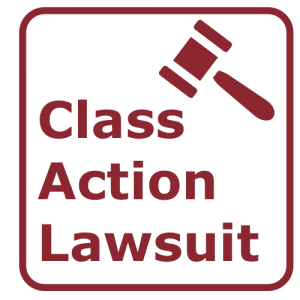Class Action Lawsuits 101: What You Required to Understand About Legal Actions
Class Action Lawsuits 101: What You Required to Understand About Legal Actions
Blog Article
Understanding Class Action Legal Action: A Guide for Lawyers
Class activity claims have come to be an essential component of the legal landscape, enabling for the consolidation of multiple cases right into a single activity. For legal representatives, understanding the intricacies of class activity litigation is critical in efficiently representing their customers. This comprehensive overview explores the basics of class action lawsuits, from identifying possible course participants to browsing the qualification process. Furthermore, it digs into key approaches for managing course action litigation and provides understandings into getting and working out authorization for negotiations. By diving into the intricacies of class activity claims, this overview furnishes attorneys with the expertise and devices needed to successfully navigate this complex area of regulation.
The Essentials of Course Action Legal Actions
Class activity lawsuits are a legal device employed to combine similar insurance claims from a group of individuals into a solitary claim, providing a effective and cost-effective technique to looking for justice and resolution. This kind of lawsuit allows a representative complainant, acting upon part of the whole class, to bring a case against a defendant who has actually apparently caused harm or violated the legal rights of numerous people.
The basic demands for bringing a class action lawsuit include numerosity, commonality, typicality, and adequacy of representation. Numerosity refers to the fact that the class have to be so large that joinder of all participants would certainly be impractical. Commonality implies that there should be usual inquiries of law or reality that are shared by all members of the course. Typicality calls for that the cases of the representative plaintiff are common of the cases of the whole course. Competence of depiction makes sure that the representative complainant will sufficiently stand for the rate of interests of the whole class.
Course activity claims can be useful for both accuseds and complainants. For plaintiffs, it allows them to pool their resources and share the expenses and dangers connected with litigation. It likewise gives an equal opportunity when they are up versus huge firms or entities. For accuseds, it provides the opportunity to successfully fix numerous insurance claims in a solitary lawsuit, avoiding the need to resist various private suits.
Identifying and Assessing Prospective Class Members
After developing the standard demands for a course activity legal action, the next action is to recognize and assess possible class participants. This process includes identifying that may belong to the class and reviewing their cases to identify if they fulfill the required criteria.
To identify possible course members, lawyers generally conduct substantial study and gather appropriate details. This may include evaluating records, performing interviews, and taking a look at documents to identify individuals or entities that might have been influenced by the supposed wrongdoing. It is crucial to establish a detailed and clear checklist of possible class members to make certain that all impacted parties are consisted of in the suit.
Once possible class participants have actually been identified, the following action is to evaluate their cases. This involves examining the values of each specific claim to figure out if they meet the lawful needs for class certification. Lawyers need to thoroughly examine the facts, evidence, and legal concepts of each possible course member's claim to ensure that they have a viable instance.
Examining potential course participants additionally involves establishing whether they satisfy the class meaning and have endured comparable harm as a result of the offender's actions. This needs contrasting the truths and situations of each possible course member's scenario to the accusations and lawful theories presented in the suit.
Browsing the Class Accreditation Process
To successfully navigate the class accreditation procedure, lawyers should faithfully abide by the step-by-step needs stated by the court. Course qualification is an important action in a course action claim, as it establishes whether a case can continue as a course action, representing a group of individuals who have comparable claims against an accused. The procedure involves pleasing details standards, such as numerosity, commonness, typicality, and competence of depiction.
Firstly, lawyers need to develop numerosity by demonstrating that the course is so huge that individual joinder is impractical. This can be accomplished through evidence or professional testimony. Secondly, they need to establish commonality by showing that there are typical concerns of legislation or fact that predominate over individual issues. This requires a detailed analysis of the cases and defenses included.
Following, legal representatives should show typicality, which suggests that the depictive complainant's cases are typical of the claims of the course members. This ensures that the passions of the representative complainant align with the rate of interests of the class. Lastly, attorneys need to demonstrate competence of depiction, suggesting that the depictive plaintiff Class action lawsuit and their advice will rather and effectively stand for the rate of interests of the class.
To browse this process effectively, attorneys have to completely prepare by conducting extensive study, gathering proof, and developing an engaging debate that pleases each of these requirements. They should also be prepared to react to any type of challenges or arguments increased by the defendant. By faithfully adhering to the procedural needs stated by the court, attorneys can increase their opportunities of acquiring course accreditation and progressing the interests of the class participants.

Trick Methods for Taking Care Of Course Action Lawsuits
Upon effectively browsing the course qualification procedure, lawyers should after that apply key techniques for properly handling course action lawsuits. These approaches are essential to make certain that the instance continues efficiently and effectively, eventually maximizing the possibilities of a positive end result for the class members.
One key strategy is to develop a solid and cohesive legal group (Class action lawsuit). This entails setting up a group of attorneys with competence in class action litigation, as well as other appropriate locations such as the details market or topic associated with the instance. A versatile team can bring different perspectives and abilities to the table, improving the total performance of the lawsuits
Another crucial strategy is to develop a well-thought-out and extensive litigation strategy. This plan needs to detail the total goals of the case, along with the details legal concepts and debates that will certainly be sought. It ought to also consist of a timeline and budget plan to guarantee that the situation stays on track and within the allocated sources.
Additionally, legal representatives need to proactively involve with the course members throughout the lawsuits procedure (Class action lawsuit). This includes providing routine updates on the progress of the situation, seeking input and responses from the course members, and dealing with any problems or inquiries they might have. By cultivating open interaction and partnership, legal representatives can develop depend on and support amongst the class members, which can be crucial in accomplishing an effective resolution
Settling Course Action Legal Actions: Arrangement and Approval
When it pertains to settling class action claims, efficient negotiation and getting approval are essential action in attaining a resolution. Course activity legal actions are intricate and involve a a great deal of plaintiffs, making it essential to get to a settlement that is acceptable and fair to all events involved.

When a negotiation arrangement is gotten to, it must be authorized by the court. The court's duty in this process is to make certain that the settlement is reasonable, sensible, and appropriately secures the passions of the course participants. The court will think about aspects such as the nature of the insurance claims, the stamina of the proof, the potential healing for the course participants, and any objections raised by class participants.
Obtaining court authorization is important as it provides finality to the negotiation and secures the passions of the class participants. It makes certain that the settlement is binding and enforceable, and class participants can receive their rightful compensation.
Conclusion

Course action legal actions have become an integral component of the lawful landscape, enabling for the consolidation of several cases into a single action. Course certification is a critical step in a course action suit, as it determines whether a situation can continue as a course action, representing a team of individuals that have similar claims against a defendant. By diligently adhering to the step-by-step requirements set forth by the court, legal representatives can increase their opportunities of obtaining class accreditation and advancing the rate of interests of the course participants.
The court will take into consideration elements such as the nature of the insurance claims, the stamina of the proof, the potential recovery for the class members, and any kind of arguments raised by class members.
By recognizing and assessing possible course members, legal representatives can determine the stability of a class activity claim.
Report this page